 View larger
View larger

Studio 501, TIMM Architects, Fragments of Memory
= More info =
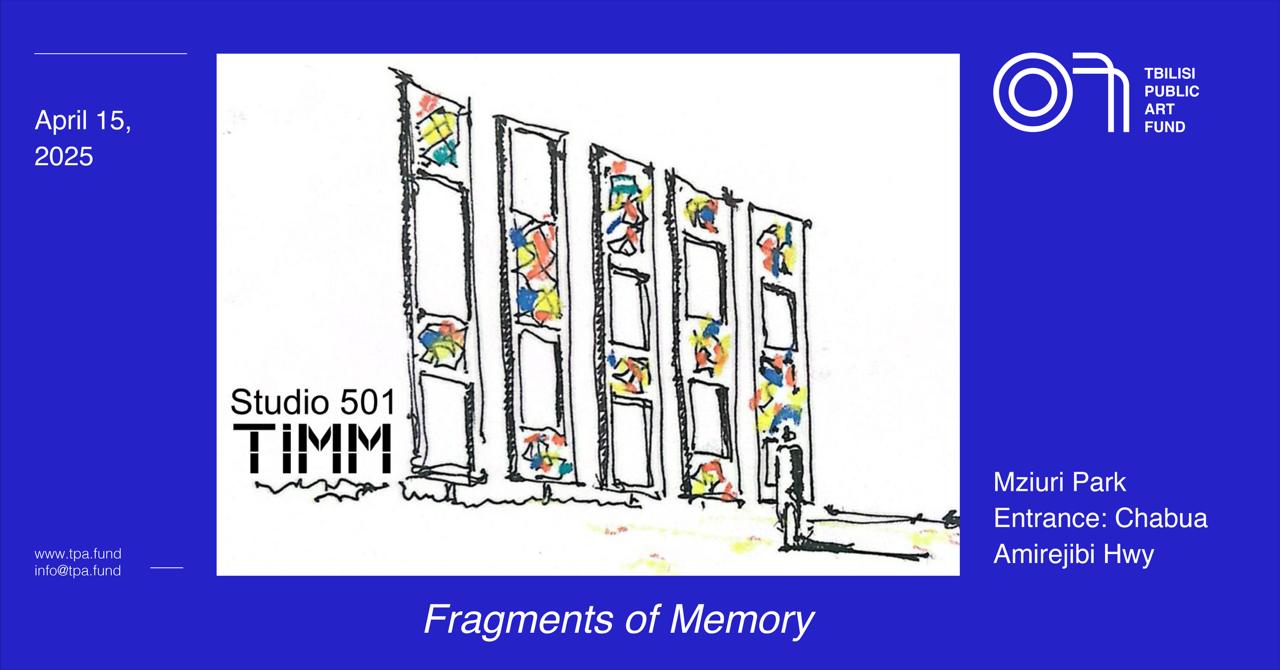
The Tbilisi Public Art Fund is proud to present the winning project of the eighth open call, "Fragments of Memory." This project was developed by Studio 501 in collaboration with the architectural firm TIMM Architecture and showcases a reimagined version of the monumental panorama "Berikaoba" by artist Vakhtang Kokiashvili (1930–2010).
Vakhtang Kokiashvili is recognized as one of the most influential figures in Soviet Georgian art and a pioneer in the stained-glass genre. Originally trained as a painter, he explored various techniques, experimenting with colored and molded glass and blending crystal, metal, and plastic to achieve unique artistic effects.
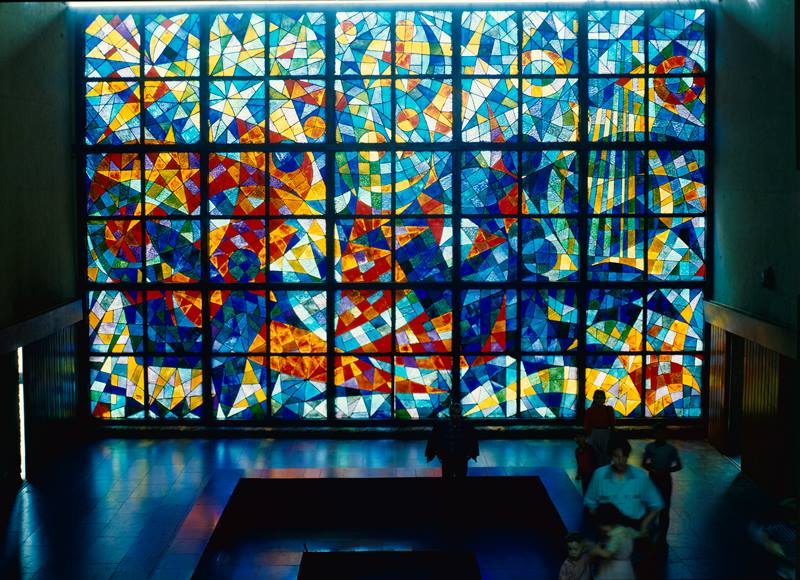
Funicular cable car lower station, 1971
Among his most significant works is "Berikaoba,"1971, a stunning stained-glass panorama crafted using specially molded glass from Riga. It was designed to adorn one of the most remarkable architectural landmarks of Soviet Georgian modernism—the lower station of the Mtatsminda funicular.
The inspiration behind "Berikaoba" stems from an ancient cult-religious Georgian festival of the same name. Like many of his contemporaries, Kokiashvili was deeply engaged with Georgian folklore and cultural heritage, seeking to reinterpret national identity through his work.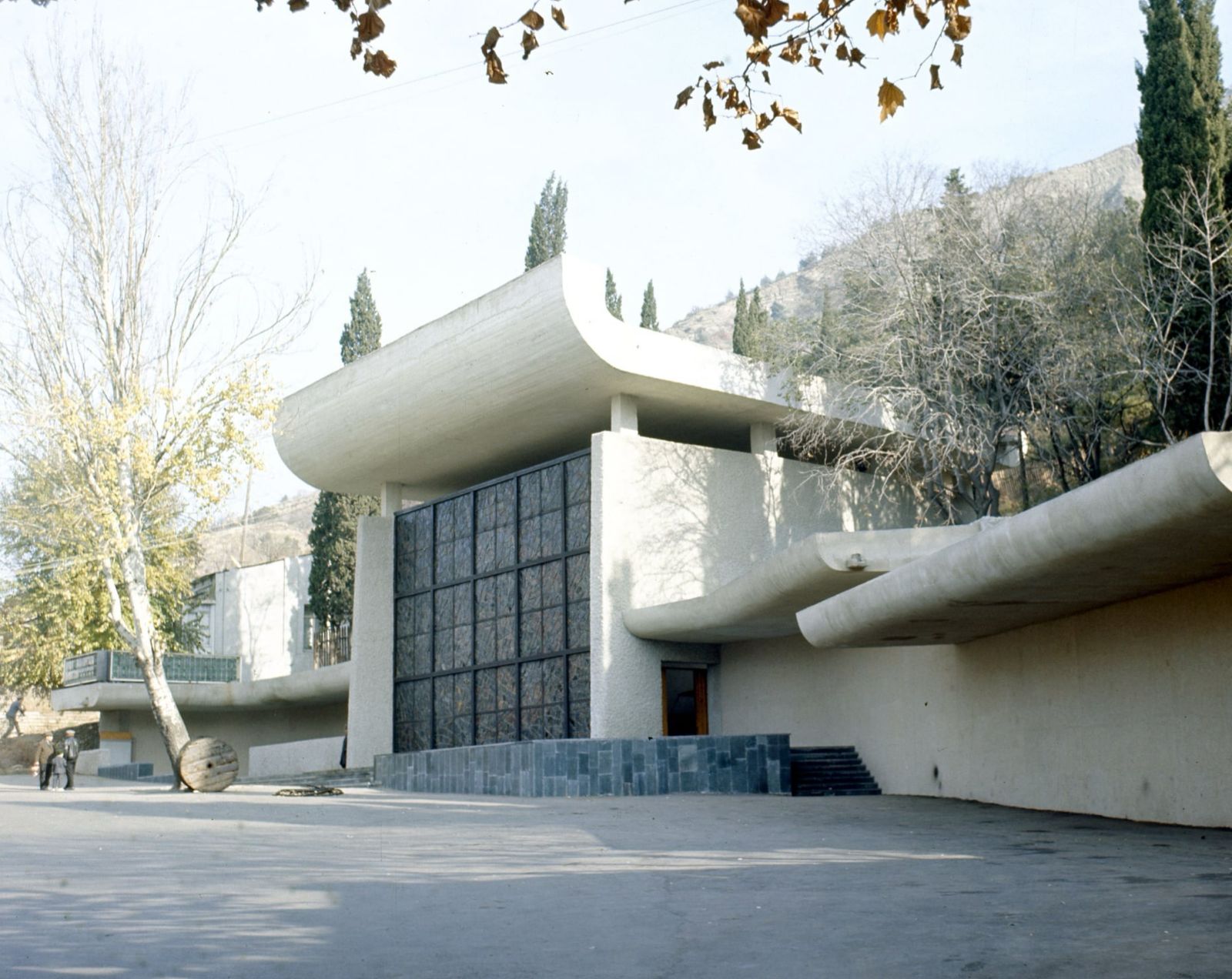
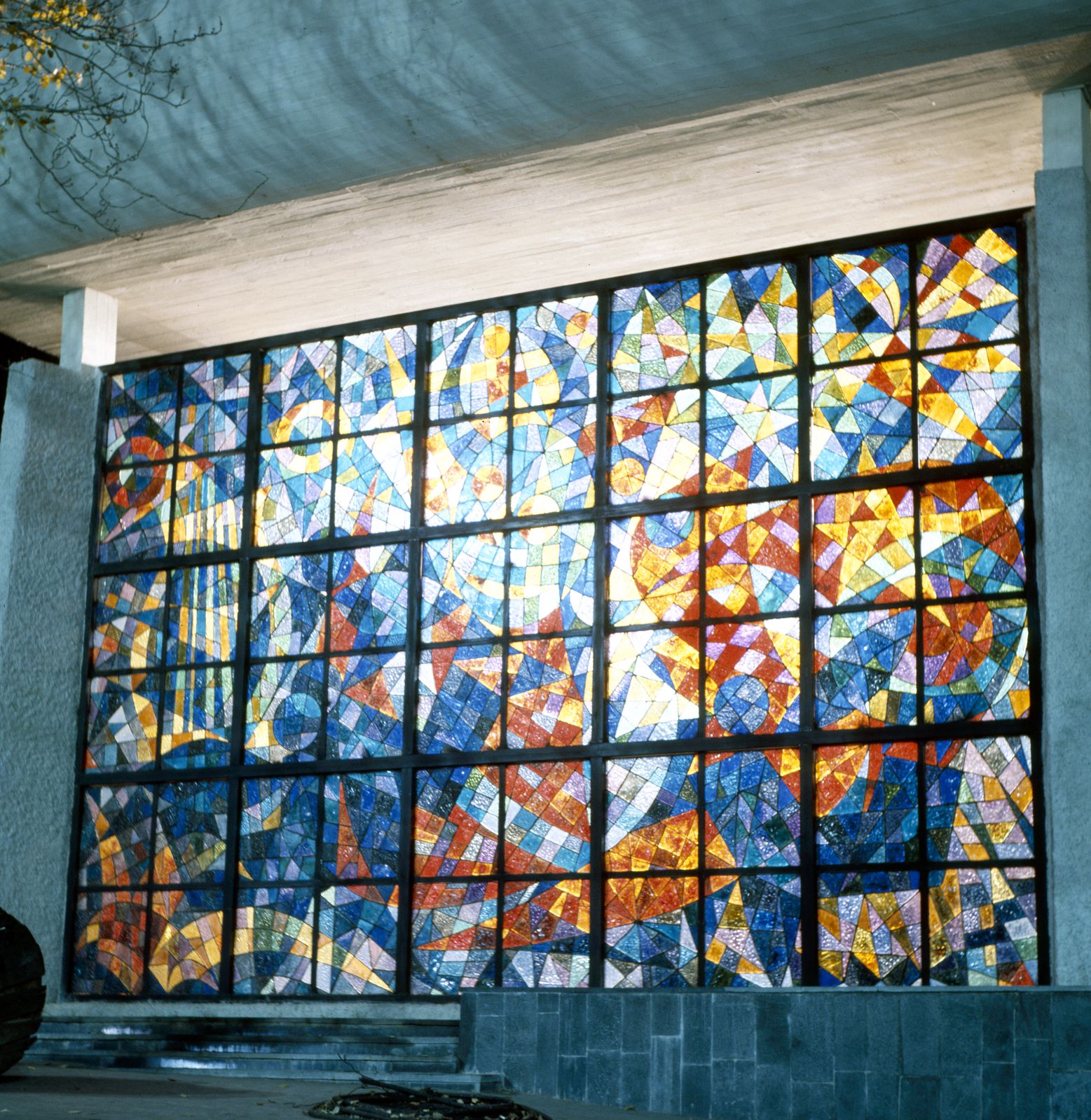
Funicular cable car lower station, 1971
The artist structured "Berikaoba" as a series of stained-glass panels, expanding its scale to an impressive 120 square meters. The semi-transparent glass allowed light to transform the artwork throughout the day, producing dynamic visual effects. The textured, relief-like surface enhanced the depth and vibrancy of colors, creating a kaleidoscopic impression where masks, musical instruments, and human figures emerged from geometric forms.
Unfortunately, in the 2000s, the lower station of the Mtatsminda funicular was demolished, resulting in the destruction of much of the monumental artwork. The surviving glass panels were preserved in Mtatsminda Park's warehouse. Innitiated by the Tbilisi Public Art Fund, one of the city's most significant yet forgotten cultural treasures is once again be displayed publicly. In 2024, Nino Kokiashvili, the artist’s daughter, led the meticulous restoration of the remaining stained-glass pieces.
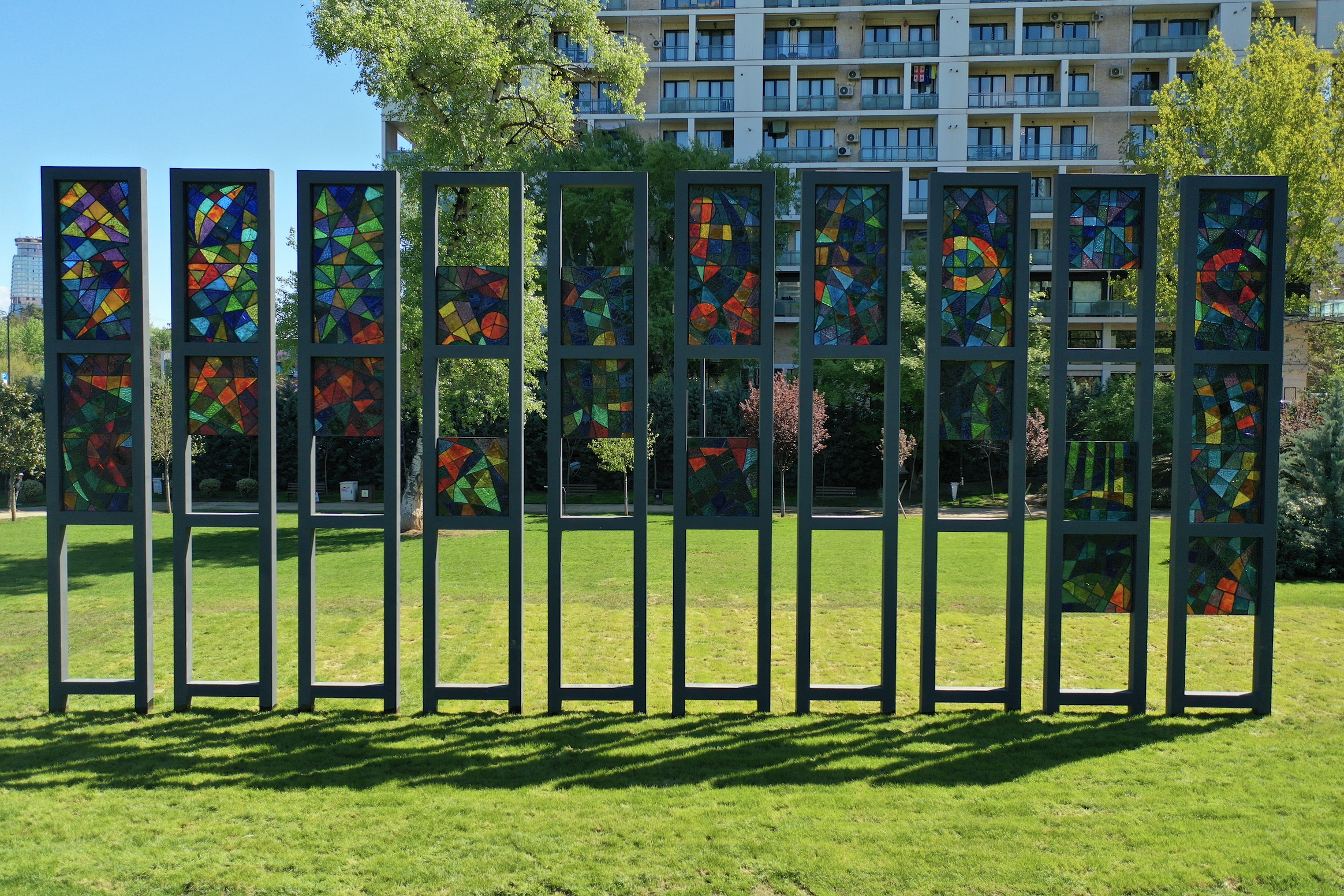
Fragments of Memory, 2025, TIMM Architects, Studio 501, Mziuri Park
The architectural installation, designed by TIMM Architecture and Studio 501, features an iron structure that serves as a framework for integrating Vakhtang Kokiashvili’s work into the contemporary environment. The stained-glass panels have been carefully arranged to reflect the original composition of the panorama.
While the artwork's fragmentary state conveys a sense of incompleteness, it simultaneously invites new interpretations by embracing emptiness as part of the visual narrative. The iron framework functions as a chronicle of the piece, embodying an attempt to reconstruct history while simultaneously offering a fresh perspective on its meaning.
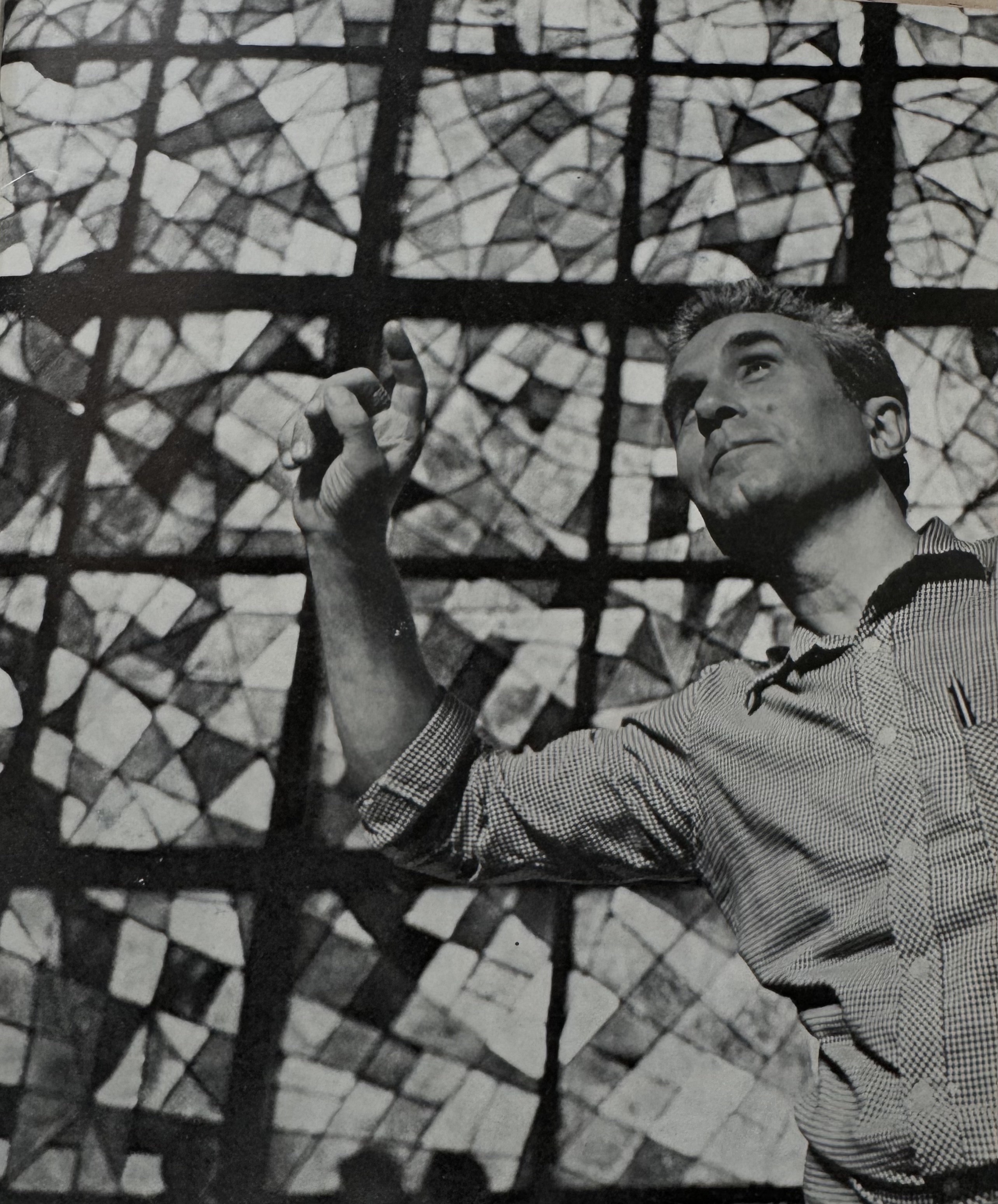
Vakhtang Kokiashvili (1930–2010) was a pioneer of stained-glass art in Georgia and one of the most prominent figures in Georgian monumental art. He was born in 1930 in Tbilisi into the family of Ioseb Kokiashvili, a well-known painter and caricaturist. In 1956, Vakhtang Kokiashvili graduated from the Faculty of Painting at the Tbilisi State Academy of Arts. From 1962 to 1969 and again from 1974 to 1979, he served as the chief artist of the Georgian Artists’ Union’s Production Plant. Since 1963, he was a board member and chairman of the Monumental and Decorative Arts Council. In 1967, he was awarded the title of Honored Artist. From 1982, he held the position of Chairman of the Monumental Art Section.
He participated in the All-Union Exhibition of Monumental Art in Moscow, as well as various international exhibitions dedicated to the synthesis of monumental painting and architecture. Additionally, Kokiashvili took part in international enamel art symposia in Hungary and Moscow (1985, 1988, 1990). At different times, his works were exhibited in Warsaw (1959), Tripoli (1965), Dresden (1969), and Sofia (1975). In 1996, personal exhibitions of his works were held at the International Creative House in Paris and at the Georgian Embassy in France.
Vakhtang Kokiashvili’s stained-glass art had a profound impact on Georgia’s cultural landscape. His works adorned numerous public and private spaces, including the lower station of the Tbilisi Funicular, the former Iveria Hotel, Tbilisi International Airport, and various venues in Black Sea resort towns. His stained-glass installations can also be found in Kutaisi, Abasha, Kvareli, Tskhinvali, Sukhumi, as well as in Russia, Ukraine, and Kazakhstan.
.jpeg)
Nikoloz Lekveishvili (Born 1986, Tbilisi) received his architectural education at the Istanbul Academy of Arts. He obtained his Master’s degree at the Polytechnic University of Milan under the supervision of Stefano Boeri. He gained professional experience by collaborating with leading architects and design studios, including Francesco Adorni and Stefano Boeri (Italy), Abin Chaudhuri (India), dom+partners (Turkey), LEKU Studio – Barcelona (Spain), and TYPSA – Madrid (Spain).
Nutsa Kandelaki (Born 1987) studied architecture at the Tbilisi State Academy of Arts and later earned a Master’s degree from the Polytechnic University of Milan with a thesis on "The Informal Transformation of the Existing City." Her research focuses on formal and informal public spaces and gentrification. Since 2018, she has been a member of the TIMM Architecture team, actively participating in various architectural projects and competitions of different scales.
Vakhtang Zakaria (Born 2001, Zugdidi) is currently a Master’s student in Architectural Reconstruction and Restoration at the Georgian Technical University. He joined the TIMM Architecture team a year ago and has been actively involved in various projects.
TIMM Architecture is a research- and design-focused company specializing in architectural solutions of different scales, ranging from large-scale urban projects to small-scale architectural and interior design projects. The TIMM Architecture team is dedicated to innovation, alternative lifestyles, and experimental approaches to light, form, and atmosphere.
Aleksandre Murvanidze (Born 1987, Tbilisi) received his education at the Georgian Technical University and later studied at the University of Applied Sciences in Potsdam (FHP), Germany. After gaining experience in German and Georgian architectural firms, he founded Studio 501, a design-focused organization that works on both large-scale and smaller projects with unique functions and challenges.





